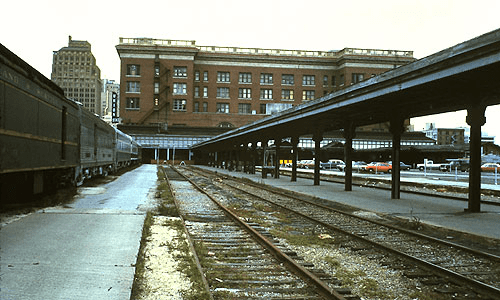When arriving in a new city by train, we first look at it from the railway station. From this place, we begin our introduction to a city. If the station has a nice exterior and interior, we experience aesthetic pleasure and anticipate what else the city can surprise us with. Find out more at houston-future.
In the modern world, people travel by their own or rented cars, use airline services or opt for water transport. Railway stations are gradually losing their leading positions. However, this does not mean that this mode of transport is worse.
What is the railway station in Houston? When and under what circumstances did it emerge? Has the building been preserved?
The beginning of history and the appearance of the train station in Houston

The railroad in Texas began its development in the mid-19th century. From the 1860s, tracks were extensively laid in cities. Houston, as one of the central and leading cities of that time, was a priority. After the 400-mile-long Texas Central Depot was built, almost all roads led to Houston.
In the 1880s, Grand Central Station started operating. It was a three-story building made of red brick, which immediately caught the eye of people arriving in Houston. The flow of passengers was large until the end of the 19th century, as it was the most popular way of transportation.
Several hotels were located near the station so that tourists, entrepreneurs, businessmen and merchants could stay in the city and be in the heart of bustling urban life. These hotels were called the Grand Central Hotel, Lawlor, Brazos, Macatee and the Tennison Hotel. Only the last one has survived to this day. These hotels attracted visitors with relatively low prices, staying overnight cost $2, and comfort.
As the railroad developed, reconstructions were carried out in the station building in 1906, 1914 and 1924. After the last renovation, the building had convenient passenger waiting rooms, storage lockers, a dining area with its own kitchen, a barber shop, a post office and several office spaces for station employees. There were also special canopies on the street side of the station to protect people from the weather.
In 1934, another passenger depot opened, which was slightly different from the others. It looked very beautiful. The exterior of the building was cream-colored, the base was made of pink Texas granite, the floor was marble, as were the walls, with added black walnut trim.
During those years, Houston’s railway station accepted about thirty trains per day. Unfortunately, with the advent of other transportation options (such as cars and airplanes), trains began to lose passengers. As a result, their numbers decreased. After 25 years, instead of 30 trains, the station served only 4. This is why Grand Central Station was closed in 1959, and a Houston post office was opened on its site.
What happened next?
After the closure of Central Station in 1959, a new one was opened in Houston that same year. When Amtrak, the national passenger railroad company, was founded, Houston’s station came under its management. Since then, Houston’s railway has been mostly used by Amtrak trains. In 1974, the company canceled all trains, leaving only one, the Sunset Limited. It runs between Los Angeles and New Orleans, passing through Houston.
This train continues to arrive at the Houston station and carry passengers to other cities.
It should be noted that intercity buses in Houston have more advantages than the train. They arrive and depart more frequently, allowing people to leave the city early in the morning and return the same evening.